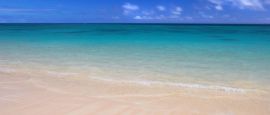Seychelles Weather, climate and geography
Weather & climate
Lying just below the equator, Seychelles enjoys a warm tropical climate all year round. The weather is influenced by two monsoon seasons – Southeast and Northwest.
Southeast Monsoon (June to September): The strong southeast trade winds bring a dry and slightly cooler weather to Seychelles, causing the average high in Mahé to dip two degrees to 28°C (82°F). Rainfall is also lower than other months, averaging 120mm (4.7 inches). The strong wind delights surfers, but not divers or swimmers as the sea is too choppy and dangerous.
Northwest Monsoon (November to March): This is the rainy season, with December and January being the wettest months. Temperatures wise, the average high is around 30°C (86°F).
The best time to visit Seychelles is during the transition months (April, May, and October). However, it must be said that April is hot and humid, with an average high of 32°C (90°F) and 170mm (7 inches) of rain.
Geography
The Seychelles Archipelago occupies 400,000 square kilometres (154,400 square miles) of the Indian Ocean in the southern hemisphere, about 1,824km (1,133 miles) northeast of Madagascar. The archipelago comprises 115 granite and coral islands and atolls, most of which are inhabited.
The Inner Islands refer to a collection of 43 islands clustering around Mahé, Praslin and La Digue. They are the political, cultural and economic hub of Seychelles. Unsurprisingly, 99% of the population live on the Inner Islands.
50% of Seychelles' landmass is protected as national parks and reserves, providing a sanctuary for some of the rarest species of flora and fauna on earth. Keep a lookout for Coco-de-mer, the jellyfish tree, paradise flycatcher, Seychelles warbler, Aldabra giant tortoise, to name but a few.
Do you have any Feedback about this page?
© 2026 Columbus Travel Media Ltd. All rights reserved. No part of this site may be reproduced without our written permission, click here for information on Columbus Content Solutions.




 You know where
You know where